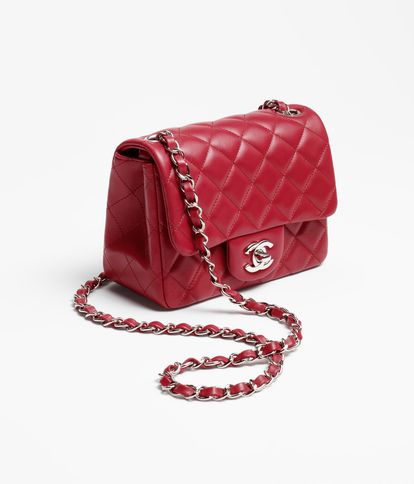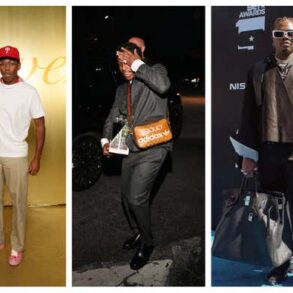Does anyone still buy a fake purse at a street market? Times have changed. Sketchy counterfeiters have left the streets and have gotten all sophisticated. The New York Times and The Cut have reported — leading to rivers of (digital) ink being spilled — that there are a good number of wealthy, high status Americans who happily buy “superfakes,” the name the social networks have given knockoffs that promise to deceive even the most seasoned bag enthusiast. The business is booming on Reddit communities and WeChat conversations with Google Translate at hand. Prices range from about €100 to €600 ($104 to $628), although for some Chanel or Hermès imitations it can reach €1000 ($1047). In terms of business, we are not talking about trifles. According to the authentication platform Certilogo, in 2020 alone counterfeits caused losses of €50 billion ($52.3 billion) in the fashion industry, and it is estimated that 20% of fashion items advertised on social networks are fakes. In addition, these products are made in unregulated sweatshops where the workers have no rights. The simple truth is, we have no idea what conditions these products have been manufactured under.
Brands have opted for technology to combat this attack of the clones. Many include QR codes or have a digital blockchain label so that every change of hands is recorded. Aura Blockchain Consortium, whose product is aimed specifically at luxury companies, was founded a couple of years ago by LVMH, the Prada group, and Richemont, which were later joined by OTB (Diesel, Maison Margiela, Marni, Viktor & Rolf, and Jil Sander) and Mercedes-Benz. Thanks to this technology, Maison Margiela’s coveted Tabi shoes now include NFC microchips that, when scanned with a cell phone, link to a website that shows the certificate of authenticity and information about the location in Italy where they were made. Burberry uses visual recognition software, and the French firm Patou has launched the Authentique Verify system that verifies the product using artificial intelligence. The consulting firm Deloitte has launched Dupe Killers, an AI tool used by brands such as Jimmy Choo. For its part, Louis Vuitton has been fierce in its fight against fakery: the fashion house now includes microchips in its bags. But despite all this heavy artillery, experts warn that they have found cloned chips and even fake designer websites.
In a booming luxury resale market, in which websites facilitate transactions between individuals, the risk of being sold a fake has increased. And these platforms have no choice but to take the matter very seriously. In France, buying fake items carries fines and even jail time. In 2018, Chanel reported The RealReal for selling up to seven fake Chanel bags, which the website’s authentication team had believed were authentic. To protect themselves, online fashion marketplaces have increased their digital resources, but above all they have hired teams of experts. With this outlook, what do those who know do to avoid being duped?
“The process can vary and depends on the piece. Normally, for us the first step is to carefully analyze the bag and additional elements, as well as the embossing of the logo and the overall feel,” explains Clare Richardson, stylist and founder of the luxury resale community Reluxe. “After spending years looking at each brand’s individual stamp, you can accurately identify the embossing and its location,” she says.
Basic indicators
It sounds obvious, but with resale bags you have to start with an inspection. Theirs is to look at the box, certificate or card, label, and dust bag. If we post the product online, the more detailed photos of the product, the better: can you see the grain of the leather? Do the rivets look good? The idea is to compare it with authentic product images from the brand’s online store.
In analog mode, the basics are to check the quality of the leather. Sometimes replicas use poorer quality leather or there are imperfections that they later treat with aggressive methods to mask them. This causes the leather to lose some of its shine. If the metal details give the impression of peeling at first, it’s a red flag. The stitches are also key. Don’t buy a bag if the stitching looks uneven, is sloping, or if it goes all over the place, and at the same time you don’t see a manufacturer’s mark. The inside is also a giveaway, since many counterfeiters cut expenses here and use cheaper fabric linings or colors that are slightly different from the original. Counting pockets and checking the location of the logo are also important. So is a low price point. These factors are always suspicious. Luxury handbags are a real investment, and you can’t find a bargain these days.
If you still have questions, the safest thing is to go to an authentication app or buy it on a website, such as eBay, that provides this type of service or offers the authenticity guarantee service, where potential purchases are inspected by a team of independent experts.
What you need to know by brand
“Every fashion house has a different feel and smell. And the handmade techniques they use are an essential part of their heritage, so at Reluxe, it’s incredibly important that, as authenticators, we can identify them,” Richardson says. “A great example is the traditional Hermès scarf, which features a hand-rolling technique, followed by manual stitches that create a clean edge. This is a very difficult technique to reproduce on a larger scale.”
These meticulous idiosyncrasies of each fashion house can help unmask imitators:
Hermès never provides certificates of authenticity. If the bag in question is being advertised with one of them, it’s a fake. Each padlock made by this French house comes with a key that has the same number as the padlock, an issue that offenders sometimes forget. Another indicator is that Hermès zippers never fall sideways.
Likewise, Louis Vuitton offers neither certificates nor serial numbers. However, since the 1980s it has included a hidden stamp with the date of manufacture. The numbers are usually engraved behind the seam, and it’s possible that the most popular knockoffs also include one. Since 2021 all the bags made by the firm have included a microchip normally hidden in the back; and the logo is engraved on all metal elements. A useful fact to know is that the original Monogram model is made of lined canvas, which goes through 100 production steps. This texture is difficult to achieve, if a Monogram has the typical grain of leather, it is not real.

Chanel panels must have at least eight stitches on each to be real, and the padding has to be aligned throughout the bag. Chanel bags do come with an authenticity card, and it has a serial number between six and eight figures. In addition, pieces such as wallets have the number behind a seam. For these products to be accepted on platforms such as Vestiairie Collective, you must provide the number and a photograph of it. Sometimes it is so hidden that if you are not careful, you can scratch the skin when you open the fold to photograph the number. Finally, an interesting fact about the maison: the Chanel counterplate (on any piece) is fastened with screws, and it can only be removed with a special Chanel screwdriver — one from any old hardware store simply won’t work.
And after all these tips, if you still have questions, you can always use your intuition. With multiple technological advances at their disposal, many specialists admit that they also take something as intangible as the object’s ‘vibe’ into consideration. There are those who say that some imitations are so effortful, so perfectly cloned, that they set alarm bells ringing. Will we get to request aura readings to avoid being sold a pig in a poke? In the world of luxury, you never know.
Sign up for our weekly newsletter to get more English-language news coverage from EL PAÍS USA Edition
This post was originally published on this site be sure to check out more of their content.




